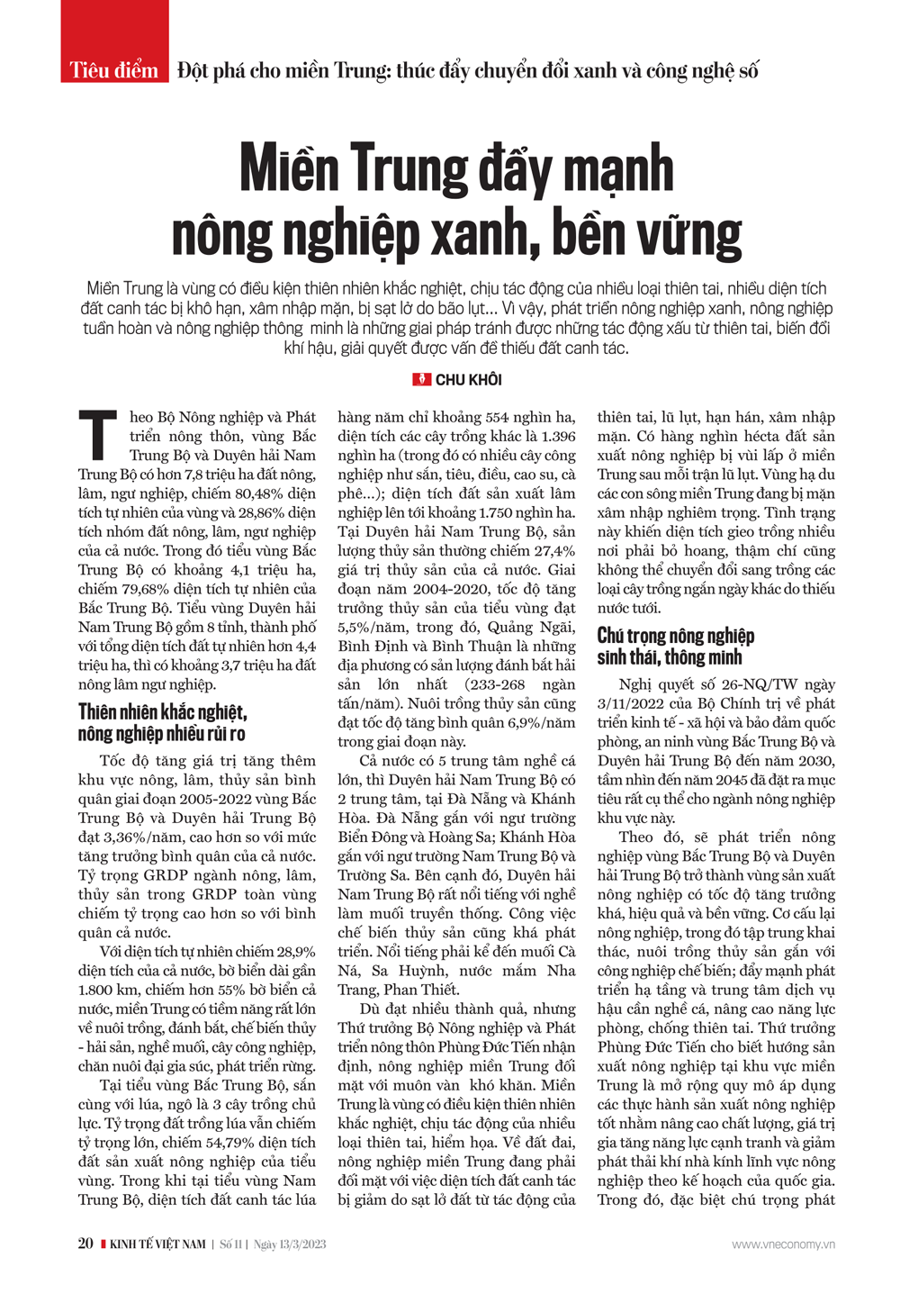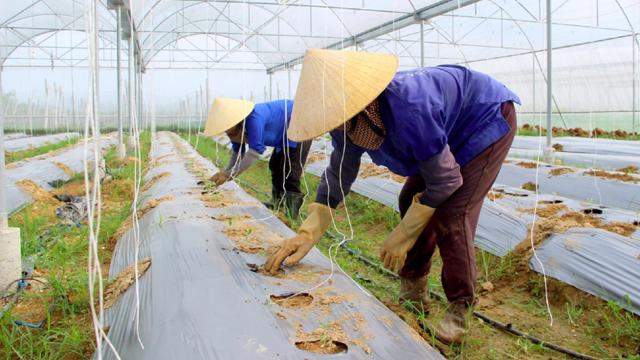[ad_1]
According to the Department of Agriculture and Rural Development, the North Central Coast and South Central Coast have more than 7.8 million hectares of agricultural, forest and fisheries land, accounting for 80.48% of the region’s natural area and 28.86% % of the agricultural area. Forestry and Fishery Land Groups throughout the country. The north-central region covers about 4.1 million hectares, which is 79.68% of the natural area of the north-central region. The South Central Coast sub-region comprises 8 provinces and cities with a total natural area of more than 4.4 million hectares, of which approximately 3.7 million hectares are land, forest and fisheries.
HISTORY NATURAL, RISK AGRICULTURE
The average growth rate of value added in agriculture, forestry and fisheries in the period 2005-2022 in the North Central and Central Coast regions reached 3.36%/year, exceeding the average growth rate of the whole country. The share of GDP in agriculture, forestry and fisheries in the region as a whole is above the national average.
With a natural area covering 28.9% of the country’s area, a coastline of nearly 1,800 km covering more than 55% of the country’s coastline, the central region has great potential for aquaculture, fisheries and seafood processing, seafood, salt production , industrial crops, animal husbandry, forest development.
In the north-central region, cassava is the three main crops, along with rice and maize. The share of rice land still accounts for a large part, accounting for 54.79% of the sub-region’s agricultural production area.
While in the South Central region, the annual rice cultivation area is only about 554,000 hectares, the area for other crops is 1,396,000 hectares (including many industrial crops such as cassava, pepper, cashew, rubber, etc.), coffee…) ; The area of forest production area was about 1,750,000 ha.
On the South Central Coast, fisheries production typically accounts for 27.4% of the country’s marine value. In the period 2004-2020, the fishery growth rate of the sub-region will reach 5.5%/year, with Quang Ngai, Binh Dinh and Binh Thuan being the places with the largest fishery production (233,000 to 268,000 tons/year). Aquaculture also achieved an average growth rate of 6.9%/year during this period.
There are 5 major fishing centers in the country while the South Central Coast has 2 centers in Da Nang and Khanh Hoa. Da Nang is connected to the East Sea and Hoang Sa fishing grounds; Khanh Hoa is connected to the South Central Coast and Truong Sa fishing grounds. In addition, the South Central Coast is very famous for its traditional salt production. Seafood processing is also quite developed. Famous for Salt Ca Na, Sa Huynh, Fish Sauce Nha Trang, Phan Thiet.
Despite many achievements, Deputy Minister of Agriculture and Rural Development Phung Duc Tien said central agriculture faces many difficulties. The Central Region is a region with harsh natural conditions affected by many types of natural disasters and hazards. In terms of land, agriculture in the central region is facing a reduction in arable land due to landslides from the impact of natural disasters, floods, droughts and saltwater intrusion.
ATTENTION TO ECO, SMART AGRICULTURE
Politburo Resolution No. 26-NQ/TW of 3 November 2022 on Socio-Economic Development and Ensuring National Defense and Security in the North Central and Central Coast Regions by 2030 with a Vision by 2045 has set a very specific goal for the agricultural sector in this region.
Accordingly, the North Central Coast and the North Central Coast will develop agriculture into an agricultural production area with a fairly high growth rate, efficiency and sustainability. restructuring of agriculture with a focus on exploitation and aquaculture linked to processing industry; advance the development of infrastructure and a logistic center for fisheries; and improve capacities to prevent and respond to natural disasters.
Deputy Minister Phung Duc Tien said the orientation of agricultural production in the central region is to expand the application of good agricultural production practices to improve quality, value-added and competitiveness, and reduce greenhouse gas emissions in the agricultural sector, according to the national plan. In particular, special attention is paid to the development of green agriculture and organic agriculture towards multi-values, which ensure comprehensive development in interaction with the ecological environment.
“The central region needs bold and visionary steps to transition to a green, low-emission and sustainable food system. In particular, it is necessary to focus on the protection and promotion of natural resources (land, water, forests, biodiversity) to produce separate agricultural products,” Deputy Minister Tien said.
Faced with difficult-to-cultivate areas, the heads of the Ministry of Agriculture and Rural Development said that agricultural production in the central region needs to change irrigation methods to cope with drought, salinity and shortage of irrigation water, adopting drip irrigation technology because it saves water .
Referring to the advantage of large sea space, aquaculture and fisheries are the great potential of the central region, Vice Minister Phung Duc Tien said localities are focused on effectively implementing Vietnam’s fisheries development strategy in 2021-2030 must have a vision by 2045.
Municipalities in the central region had strategic plans to develop the fishing industry. In Da Nang, the marine economy accounts for almost 70% of the structure of the agricultural, forestry and fisheries industries, so this place has set the goal that the growth rate of fisheries output value will reach 3-4% per year by 2030. ; the total city-wide seafood production reached 38,000 tons; Seafood export sales reached over USD 250 million.
The content of the article was published in Vietnam Economic Review No. 11-2023, issued on March 13, 2023. Welcome readers to read The:
https://postenp.phaha.vn/chi-tiet-toa-soan/tap-chi-king-te-viet-nam

[ad_2]
Source link

